Number Logic Puzzles: Daily Guide (Sumplete + 7 Alternatives)
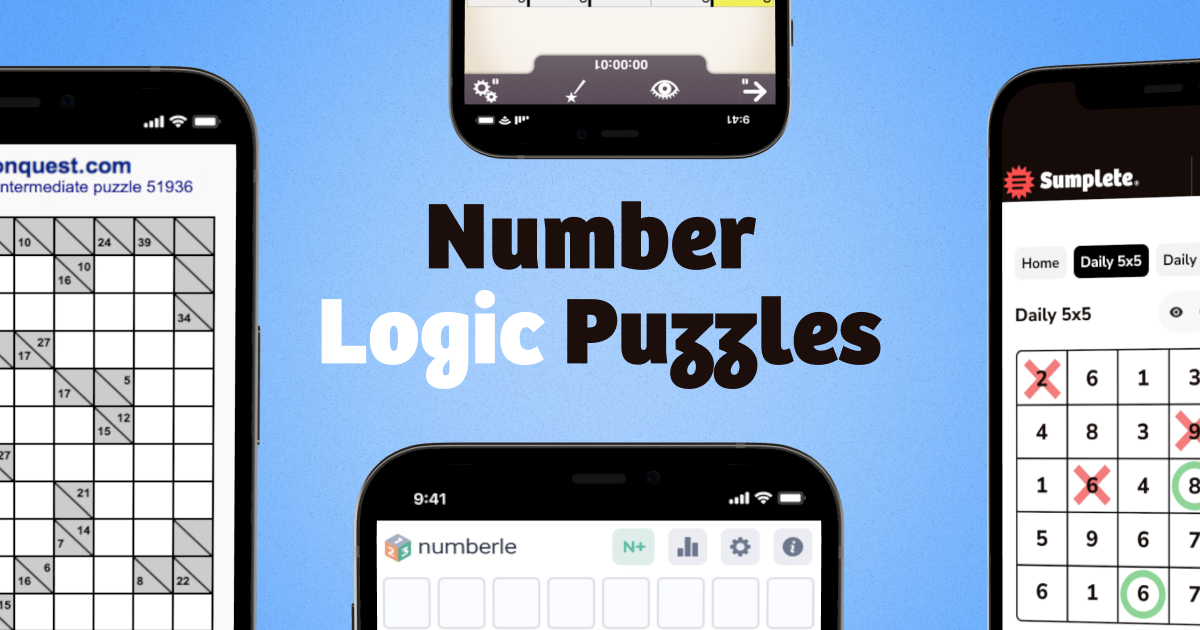
This guide explains the rules for today’s most popular daily grids—Sumplete, Sudoku, Nonogram, Kakuro, KenKen, Killer Sudoku, Binary Puzzle, and Numberle—so you can pick a favorite and sharpen your brain just by playing a few minutes each day.
Table of Contents
- Introduction to Number Puzzle Games
- Play Sumplete (How it works)
- 7 Popular Alternatives
- Which Puzzle Fits Your Brain?
- FAQs
- Where to Play Sumplete
What Counts as a Number Logic Puzzle?

Number logic puzzles first made a splash in 1979 when the game now known as Sudoku made its way into an edition of Dell Puzzle Magazine. The game, which was originally called "Number Place,” requires players to fill in a grid of numbers so that each row, column, and square contains the numbers 1-9. Repeated numbers are not permitted.
Sudoku players begin each game with a partially filled grid. The numbers that are pre-filled cannot be moved, challenging the player to use logic, process of elimination, and often trial-and-error strategies to populate the remaining spaces.
While the game was initially published in Manhattan, New York, it didn't truly hit the mainstream until after Maki Kaji, president of the Japanese company Nikoli, discovered the number puzzle game and published it in his puzzle magazine in 1984 with a Japanese title that was later shortened to "Sudoku." From there, the game spread to Britain and the rest of Europe before finally making its way back to the U.S. in the early 2000s.
Around that same time, a new game called KenKen began making waves. Originally created by Tetsuya Miyamoto in 2004, KenKen was published in the UK edition of The Times in 2008, and then in The New York Times later that year.
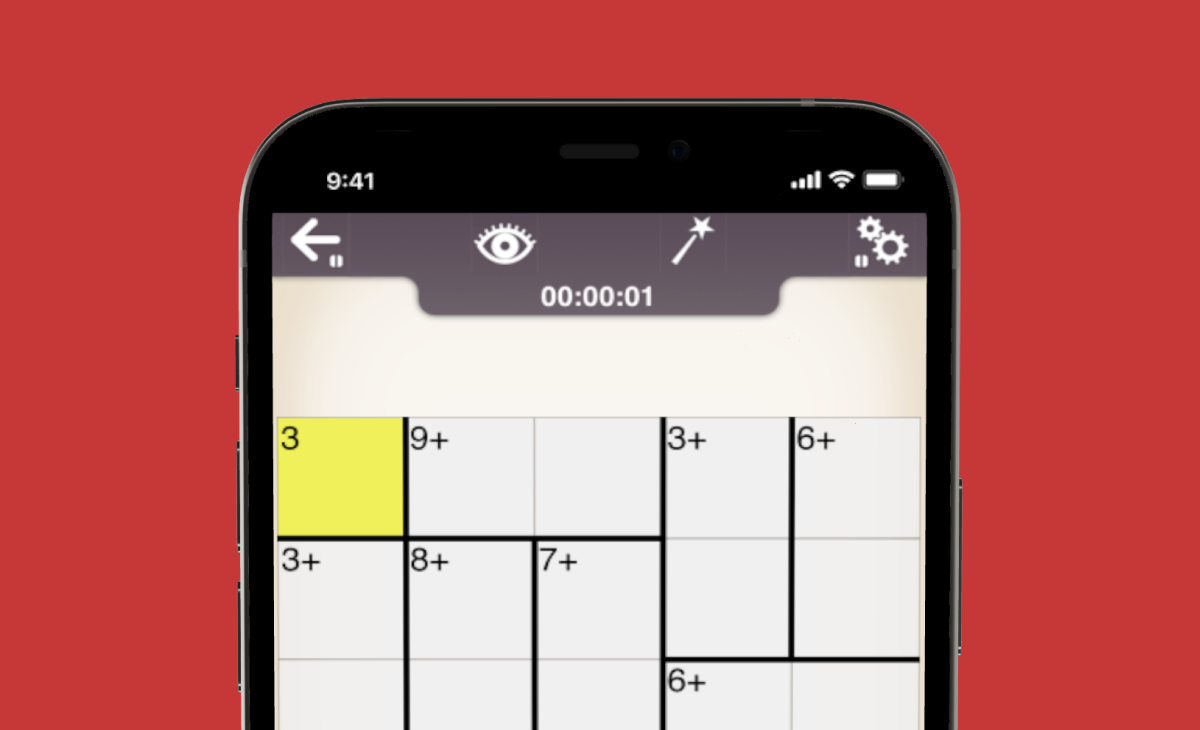
Like Sudoku, KenKen is another grid-based game. However, KenKen requires players to leverage their addition, subtraction, multiplication, and division skills to fill out each portion of the grid, which is divided into sections known as "cages." Each cage includes a mathematical operation that the player must use to achieve the target number in said cage. Like the rules of Sudoku, numbers cannot repeat within the same row or column, but they are permitted to repeat within the same cage.
The popularity of these games can largely be attributed to their shared characteristics.
Both games feature:
- Grid-based layouts
- Strategies that require sums, equations, or groupings of numbers
- A single, unique winning solution
In 2023, a new math puzzle game made headlines - Sumplete.
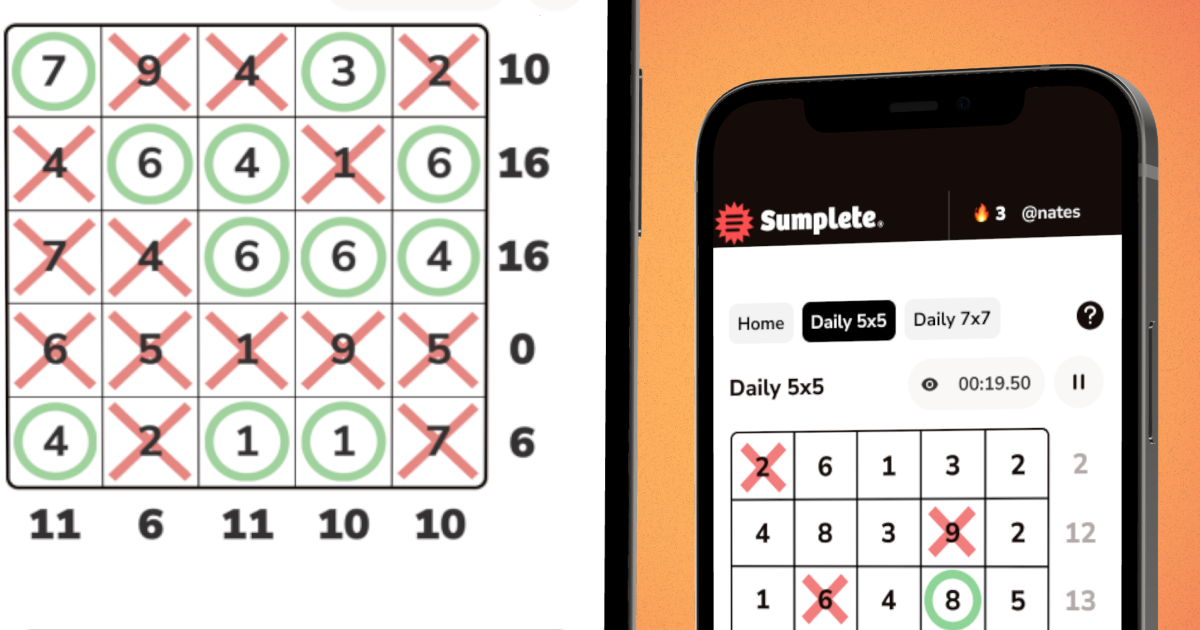
At-a-Glance Comparison Table
| Puzzle | Core Mechanic | Grid Sizes | Avg. Solve Time | Daily Source | Difficulty Range |
|---|---|---|---|---|---|
| Sumplete | Eliminate numbers to hit row/col sums | 5×5–7×7 | 3–7 min | Sumplete.com | Easy–Master |
| Sudoku | Fill 1–9, no repeats | 9×9 | 7–10 min | NYT, Cracking the Cryptic | Easy–Evil |
| Nonogram | Paint cells to reveal an image | 5×5–20×20 | 10–15 min | Griddlers.net | Medium–Hard |
Times are typical for beginners–intermediate players; your mileage may vary.
How was Sumplete created?
Sumplete was created by Daniel Tait in the spring of 2023. Through a series of ChatGPT prompts, Tait developed the concept and generated the code that would produce the first-ever version of the game. After a little bit of fine-tuning to add new features and enhance the design, Sumplete was released to the public, garnering plays from more than 50,000 users one week after its launch. Today, it has been recognized as one of the first games produced with the assistance of ChatGPT.
How do I play Sumplete?
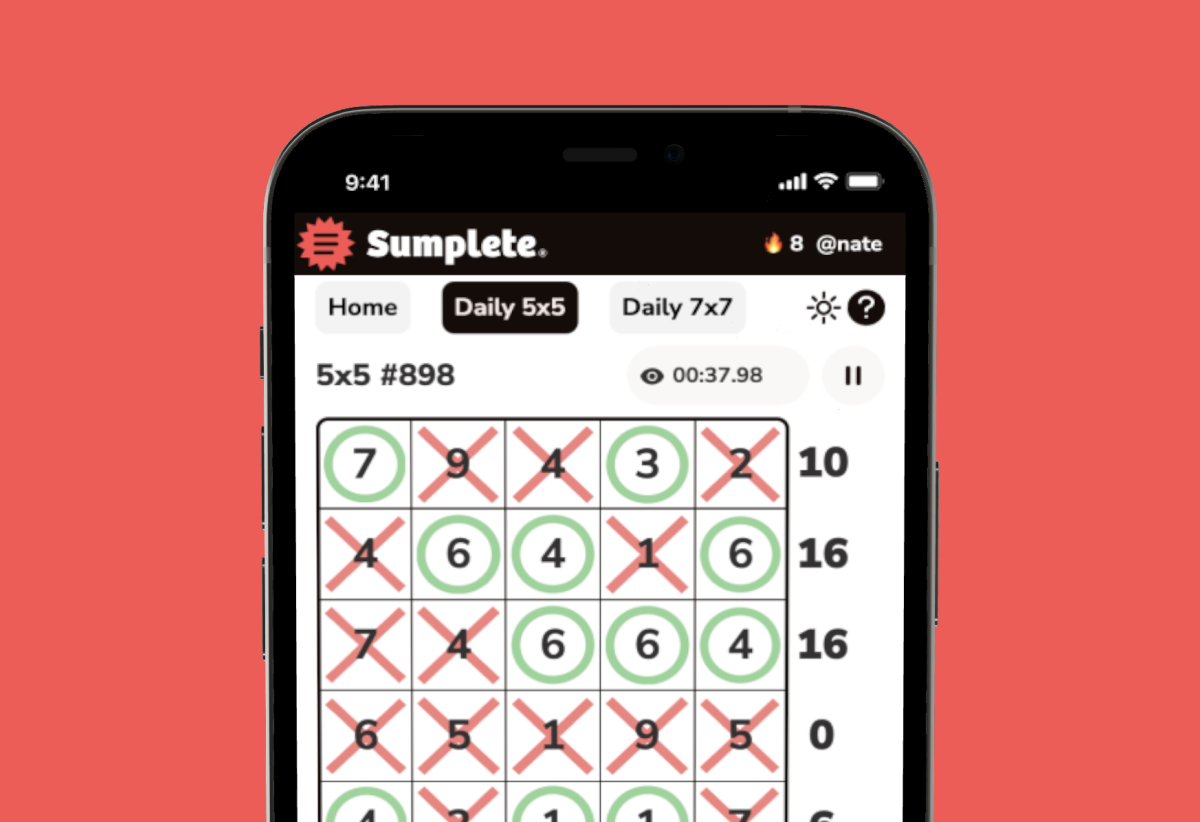
At the beginning of each game, every number on the grid is an "unknown" state, with the goal being to identify which numbers to delete and which to keep to ensure that the sum in each column and row matches its corresponding "sum clue."
- To delete numbers from a row or column, click their corresponding cells once. A red "X" will appear over the selected cells, eliminating them from the sum total of that row or column.
- To select numbers to be added to the sum of a row or column, click the corresponding cells twice. A green circle will appear over the selected cells, factoring them into the sum for that row or column.
- Upon successfully removing and selecting the correct numbers in a given row or column, the sum total for that grouping (the sum clue) will light up along its border.
Once all numbers on the right and bottom of the grid are lit up, you’ll have won the game! For step-by-step instructions, see our Sumplete how-to guide.
If you’re looking to push your skills further, we’ve put together advanced Sumplete Hard Mode strategies for larger boards.
And if you’re curious how Sumplete compares to classics like Sudoku, read our full Sumplete vs Sudoku comparison.
7 Popular Alternatives
| Puzzle | Key Points |
|---|---|
| Sudoku | Classic 9×9; no arithmetic; huge mobile audience. Why Sumplete often feels faster. |
| KenKen / Calcudoku | Cage sums + arithmetic operations; great for mental math. |
| Kakuro | Cross-sum “crossword” style; strong search interest for “kakuro online.” |
| Killer Sudoku | Hybrid of Sudoku and Kakuro (cages with sums). |
| Nonogram (Picross) | Picture-logic; low KD / high volume—great segue into our Nonogram hub. |
| Binary Puzzle (Takuzu) | 0–1 parity grid; light math, heavy logic patterns. |
| Numberle | Wordle-style equation guessing; casual, quick sessions. |
Links point to our in-depth comparison guides or relevant sections on this page.
Sudoku
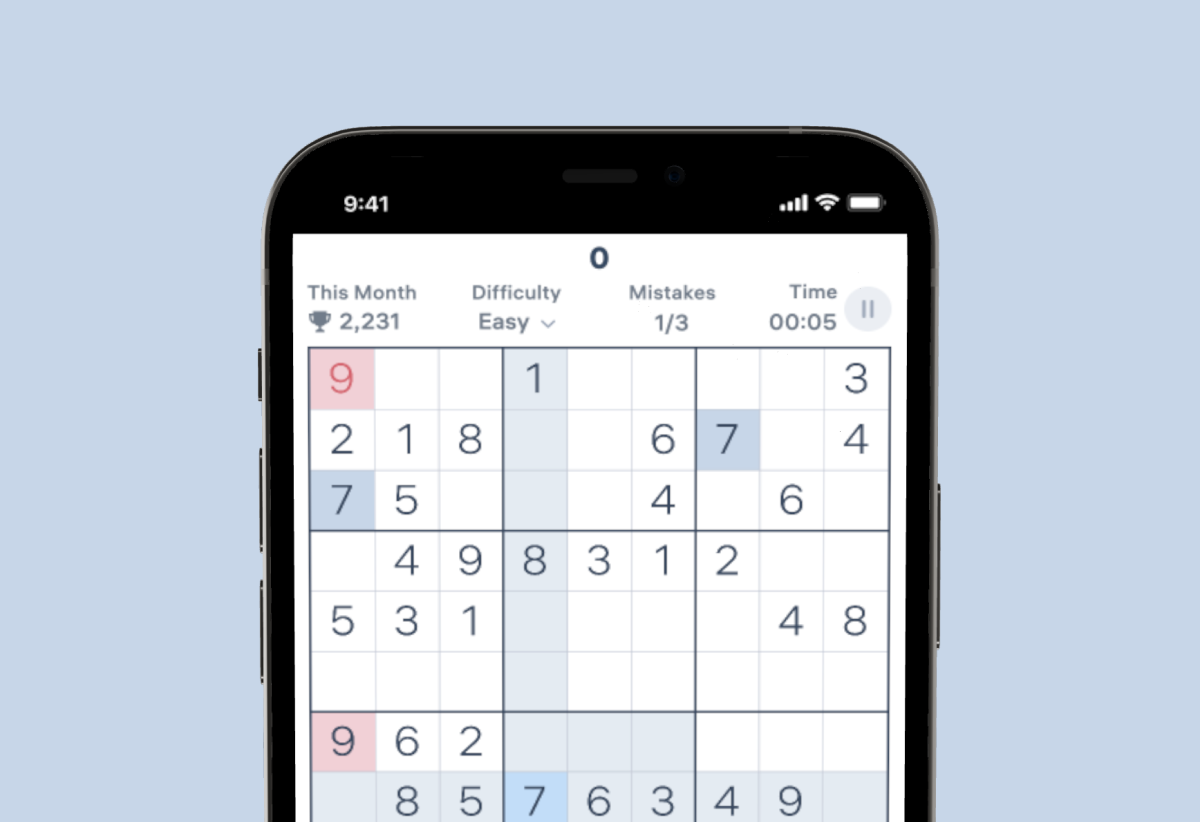
If you like puzzles but hate math, Sudoku will be your jam.
As mentioned previously, this 9x9-style game sees players attempt to fill out a partially pre-filled grid with the numbers 1-9 in every row, column, and 3x3 square on the board.
A massive community of Sudoku players has formed in the mobile gaming space over the past few decades, with millions of players competing with one another on their smartphones daily.
If you enjoy Sudoku's 9x9 grid setup, you should give Sumplete's 9x9 puzzle a try!
KenKen

If you want a game that is similar to Sudoku, but you want bragging rights when it comes to who has the best mental math skills, KenKen will likely be your game of choice.
KenKen boards also limit players to using numbers 1-4 (or 1-6 in advanced grids) once per row and column, but players must also use these numbers in addition, subtraction, multiplication, and division equations to reach the target number for each cage within the greater grid.
In addition to its addictive nature, KenKen is also a great way to improve your math problem-solving skills.
Those who enjoy math puzzles like KenKen will probably find adding numbers on Sumplete's grids to be a fun experience as well.
Kakuro
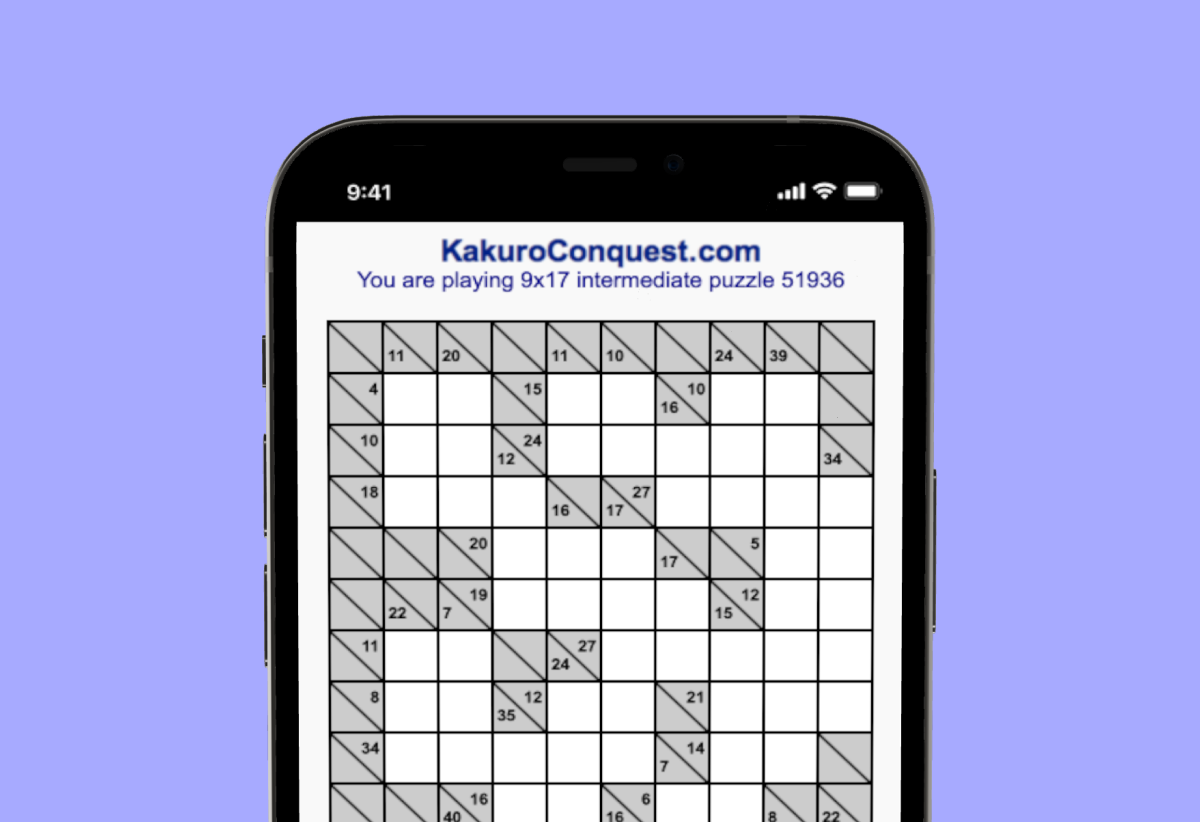
In a world where logic puzzles are vanilla and math puzzles are chocolate, Kakuro is like a vanilla-chocolate twist cone.
Kakuro challenges players to fill in empty spaces on a grid so that each horizontal row of numbers adds up to the closest pre-filled cell to the left, while the sum of each vertical column matches the closest pre-filled cell above. And, like Sudoku and KenKen, numbers cannot repeat in a given row or column.
A Kakuro board closely resembles a crossword puzzle, and many fans of the latter have found Kakuro to be a fun mathematical alternative to its linguistic counterpart.
Kakuro's influence on Sumplete is clear with the latter's inclusion of the bidirectional addition element. Like Kakuro, Sumplete has a variety of grid sizes and difficulty levels for players to try out and test their abilities.
Killer Sudoku
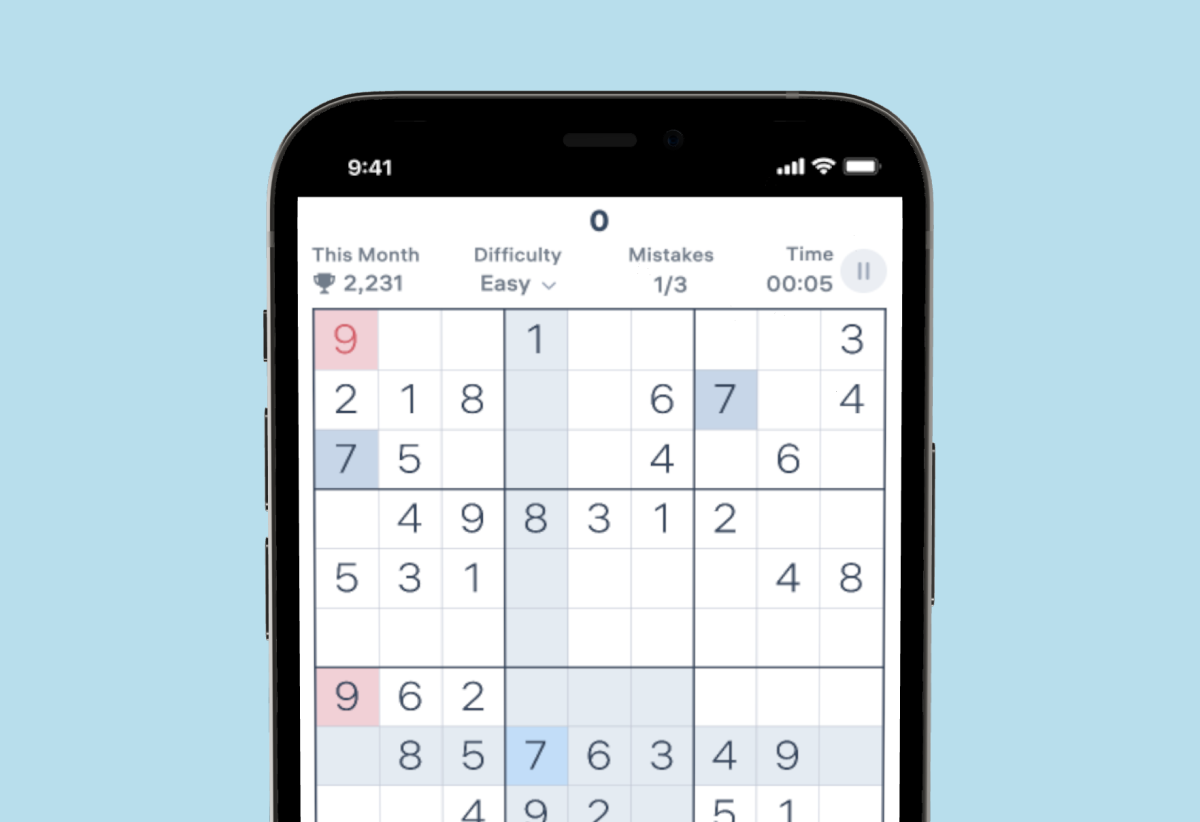
Killer Sudoku is the love child (or hate, depending on your interpretation) of Sudoku and Kakuro.
The end goal remains the same: fill each row, column, and square with the numbers 1-9 without repeats. However, players must also fill in cages, or groups of cells that can span across rows, columns, and squares. Cages are indicated on the board in varying colors and are accompanied by a target number. Players need to fill in each cage with numbers that, when added, equal the cage target number. Numbers cannot repeat in the cage, and if that wasn't hard enough, a Killer Sudoku board does not start with any pre-filled cells.
Fans of the legacy games will find a lot to like about Killer Sudoku, while critics of the originals may scream in horror.
Sumplete offers the inverse experience of Killer Sudoku as the target numbers are found at the bottom and right side of the board. Seasoned Killer Sudoku fans should have no problem adjusting after a few plays!
Nonogram (Picross)
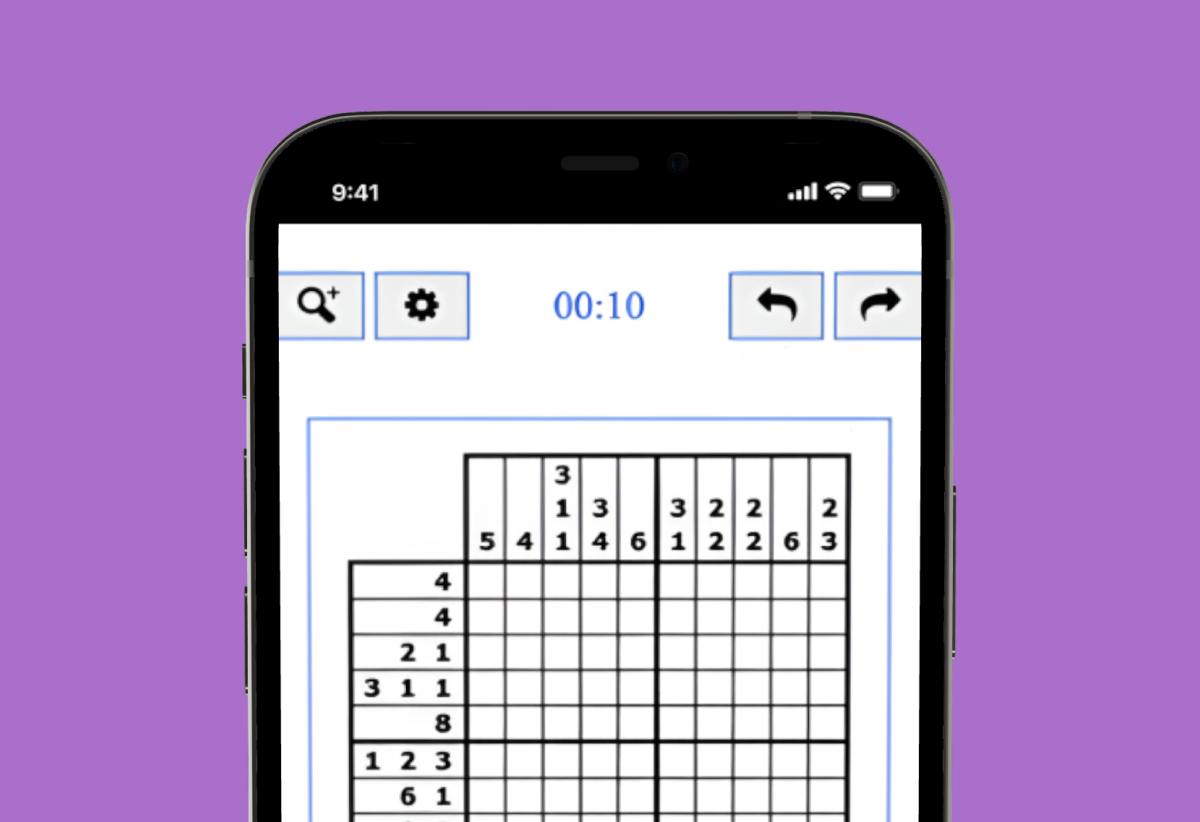
Pablo Picasso would've loved Nonogram (also known as Picross).
The objective of Nonogram is to fill in a grid with either colored or dotted cells. Number clues are provided on the edge of each row and column. Players must leverage these clues to fill in the border and identify the picture displayed across the entire grid, which serves as the solution to the puzzle.
If uncovering a cryptic message sounds like fun to you, you definitely need to try Nonogram.
There aren't any pictures in Sumplete, but Nonogram players will find familiarity in attempting to align their grid to the target numbers below and to the right of the playing board.
Binary Puzzle (Takuzu)
Can't count to 5? That's not going to be an issue if you are trying to solve a Binary Puzzle (otherwise known as a Takuzu puzzle).
This game only uses the numbers 0 and 1. The rules are pretty straightforward: each row and column in the partially pre-filled playing grid must have an equal number of 0s and 1s. No more than two of each number can appear next to one another, and no two rows or columns can be the same.
You'd think this would be an easier version of Sudoku, but the game's logical requirements can certainly pose a challenge — especially at the harder levels.
Those in the market for a new game with a few more numbers can check out Sumplete (some grids even feature two-digit figures ... gulp).
Numberle
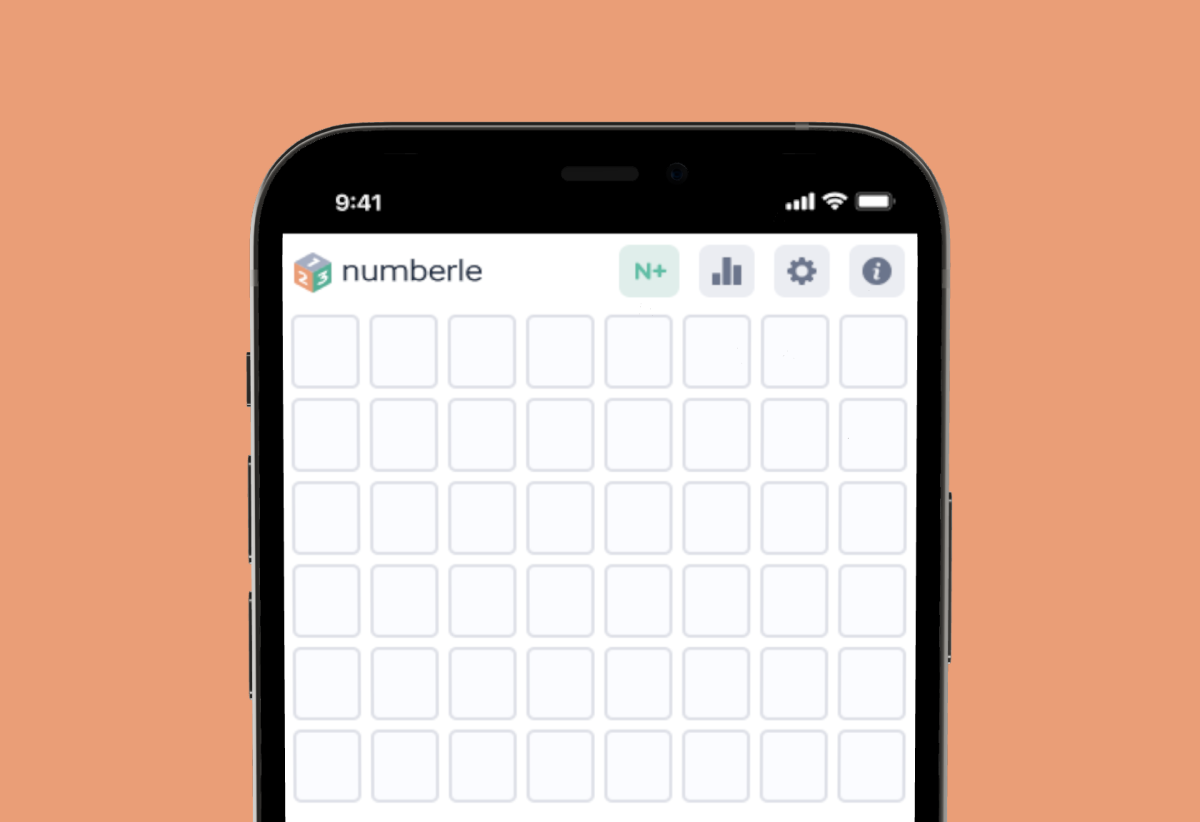
Numberle is the mathematical equivalent of Wordle.
Players start by entering valid mathematical equations into the playing board, which takes the form of an 8-cell row. Once entered, cells with values that are in the final equation and in the right position will appear green, while those that are in the final equation but in the wrong position will appear orange. Values that are not in the final equation will appear gray. Players have six tries to successfully identify the entire equation.
With Numberle, wordsmiths and number nerds may be able to find common ground.
Sumplete doesn't feature any words, but if you enjoy basic math and number guessing, you should give it a shot!
Which Number Puzzle Fits Your Brain?
| Game | Skill Focus |
|---|---|
| Nonogram (Picross) | Logic-heavy: picture-logic; placement deduced from row/column clues rather than numeric value. |
| Binary Puzzle (Takuzu) | Logic-heavy: parity and sequencing rules; patterns with 0–1 constraints. |
| Sudoku | Logic-focused: organize digits 1–9 in each row, column, and box with no repeats. |
| Killer Sudoku | Slightly logic-leaning: cages add sums, but deduction still dominates play. |
| Kakuro | Mixed: cross-sum “crossword” requiring both deduction and basic arithmetic. |
| Numberle | Slightly math-leaning: form valid equations while deducing symbol positions. |
| Sumplete | Math-focused: use basic addition with logical elimination to reach row/column targets. |
| KenKen | Math-heavy: combine addition, subtraction, multiplication, and division within cages. |
This continuum is indicative; individual puzzle variants may shift the balance between logic and math.
Psst! Sumplete was also designed with accessibility in mind. The game's layout is color-blind friendly, and the mobile user experience is optimized for accessibility. Members who sign up for a free account can also access and adjust the high contrast settings to their liking.
FAQ
| Question | Intent Keyword | Short Answer |
|---|---|---|
| What is the hardest number puzzle? | hard number puzzle | Difficulty is subjective, but advanced Sudoku and Killer Sudoku are common top-tier challenges. Sumplete’s 7×7 Master offers a quick, tough math-logic test. |
| Are number logic puzzles good for adults’ brains? | logic puzzles for adults | Regular puzzle play is associated with better processing speed and memory. A consistent daily habit (even brief) is a practical brain-training routine. |
| How long should a daily brain puzzle take? | daily brain puzzle | Aim for 5–10 minutes to keep the habit; longer sessions (~30 minutes) can deepen practice when time allows. |
Where can I play Sumplete?
Choose from the daily 5x5 or 7x7 games to join thousands of other players online — all attempting to solve the same puzzles.
Or, if you're new to Sumplete, try out our 3x3 and 4x4 modes, both of which offer unlimited grids and play sessions. These levels are perfect for those looking to improve their skills.
Advanced players can test their abilities with our 6×6, 8x8, or 9x9 grids. Those seeking a real challenge can crank the difficulty level up to "Master" and try to solve some of the hardest grids Sumplete has to offer!
Ready to start a daily streak? Play today’s Sumplete puzzle free to get started!